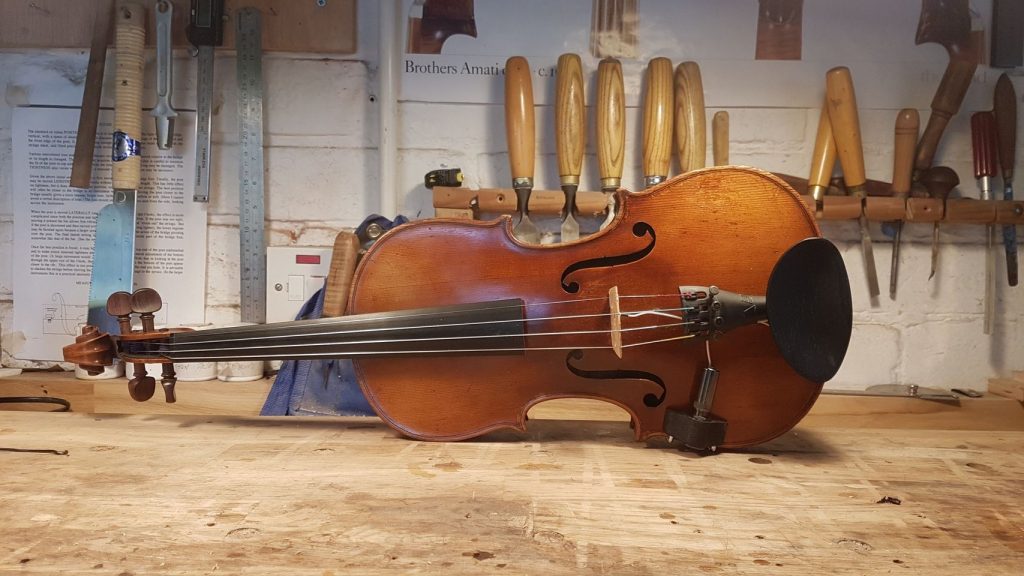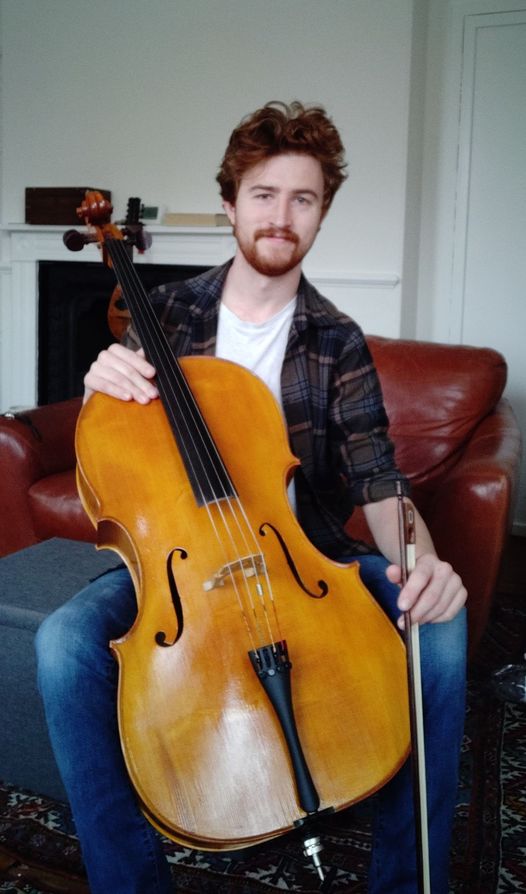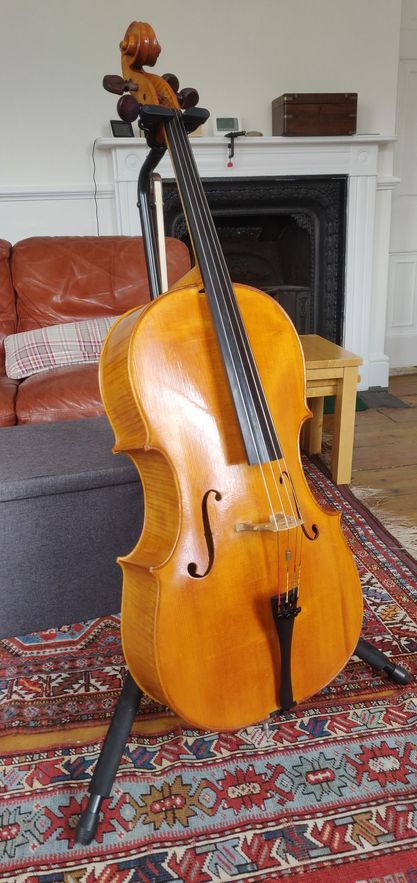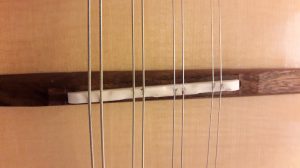There are many small yet important details that go into a good violin setup, but at least whether or not it plays in tune is (mostly!) down to the player.
A fretted instrument, on the other hand, needs to be precisely built in order to ensure perfect intonation on every string in any position on the fingerboard. In the case of an instrument with a floating bridge, e.g. mandolin or banjo, this becomes something which the player needs to be aware of when changing strings as, if the bridge moves at all, it can cause the whole instrument to play out of tune. on one or more strings.
Why a slanted bridge? On nylon stringed instruments this is usually not necessary, but with steel, the strings gradually increase in mass from treble to bass such that the “mathematically correct” length for the strings needs to be extended gradually in order to avoid the mere act of pushing the strings to fret them from causing them to “bend” (in much the same manner as vibrato), and play notes sharp.
This is fairly well understood, however due to the difference in mass distribution between the wound and the plain strings, it is often impossible merely to slant the bridge. The situation often arises in which if the first wound string plays in tune, the last plain string will play sharp (because it needs more compensation due to its sheer inertia), and if that compensation is applied, the wound strings will play slightly flat.
On banjo bridges I will often take a small notch out where the 3rd string sits, to increase its length appropriately. A mandolin frequently requires something like this too, however shorter, proportionally thicker strings generally have a very low tolerance for error in this matter. Also, since mandolin strings come of pairs of the same gauge and thickness, it is of paramount importance that each pair have exactly the same length, so that they have the same intonation (hopefully perfect).
A customer brought in a mandolin which, although generally nicely made, had a bridge and saddle which were a simple gradient. This lead to the aforementioned issue, and to solve it required lowering the bridge top to expose more saddle for shaping, replacing the saddle with a new blank, and then carefully creating a “stepped” profile for the top.
This process can only really be done properly once the instrument is strung and tuned up to pitch, so it’s easy to see why many manufacturers opt for a simple, fairly effective straight compensation. However depending on the instrument (and the perceptiveness of the player), this imperfection can be quite noticeable.
I also took the opportunity to minutely adjust the action height. Again, this can only be done properly once the instrument has been strung up for a while, as the neck moves – sometimes too much, requiring a truss rod adjustment – and the plate of the instrument can almost shift (sinking under pressure for a movable bridge instrument, and pulling up for a fixed bridge e.g. guitar).
Manufacturers will often leave the action slightly high, as the perception is that higher action leads to a louder instruments, and NO ONE (I assume???) wants an instrument which buzzes because the action is too low. Plus, there is not time in a production line setting to set up the instrument and then wait possibly a week or two before going through the whole process again to more precise tolerances.
So, to cut a long story short, whether you own a cheap or an expensive instrument, there is a high chance you can improve both the tone and feel by getting a service like this done at some point. Get in contact today for a free basic checkup on your instrument.











